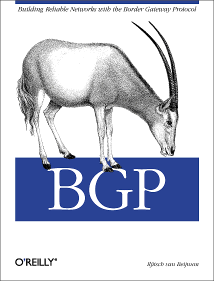
|

|

|
|
Home ·
BGP Expert Test ·
What is BGP? ·
BGP Vendors ·
Links ·
Archives ·
Books ·
My New BGP Book | ||
 (advertisement)
(advertisement)
| ||
|
105.57 million IPv4 addresses used in 2010 so far (posted 2010-07-02)
On january first this year, the number of available IPv4 addresses was 722.18 million (see the 2009 IPv4 address report). On july first, this was 616.61 million, made up of 268.44 million addresses in the 16 /8 blocks left in the IANA global pool and 348.17 million given out by IANA to the five Regional Internet Registries that the RIRs haven't given out to end-users yet. So we used up 105.57 million addresses in the first half of 2010. That means we're on track to beat last year's 203.4 million by a few percent this year. If nothing changes. A problem with determining these numbers is that ARIN "backdates" their address allocations sometimes: when they give out a /16 in 2008 and then another /16 in 2010, this will often show up as a single /15 block with a 2008 allocation date. So just listing all the allocations for a given year would always show a smaller number than the actual decline of the free address pool. Strangely, the opposite is happening currently: the total number of addresses with a jan - jun 2010 allocation date is 108 million, 2.43 million more than the decline of the free address pool. This suggests that at least 2.43 million addresses given out in previous years have been returned in the first half of 2010. This number isn't easily derived from the published numbers, so I'm not going to look into it now. However, I'll look at the returned address space in some detail in the future. Also interesting: last year, LACNIC gave out 10.98 million addresses and AfriNIC 5.99 million. But halfway through 2010, they're already pretty close to last year's totals: 10.38 and 4.67 million, respectively. China got 50.66 million addresses last year, but is now at 18.96, while Korea got 10.95 million last year and has already bested that at 11.68 million for the first six months of the year.
|
